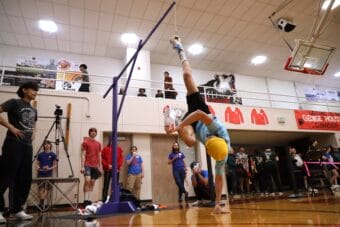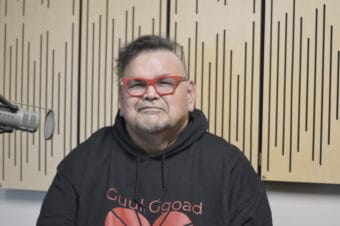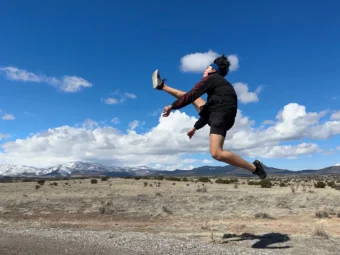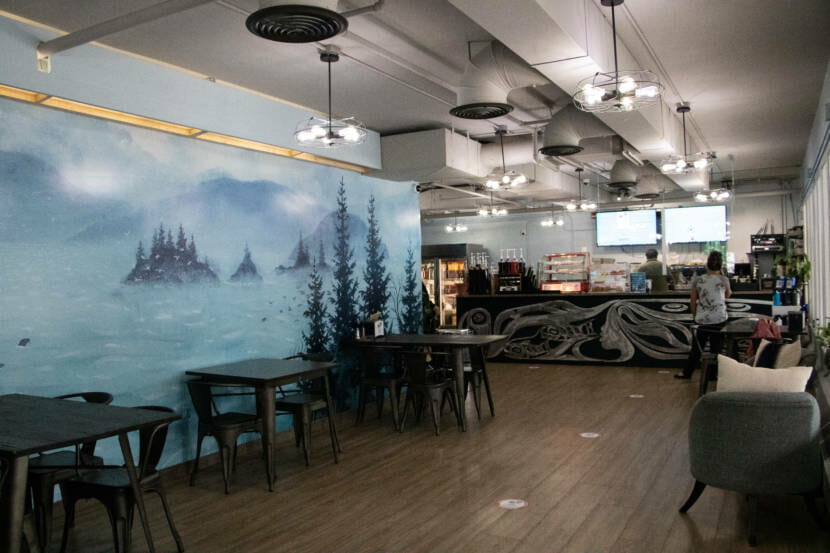
A vivid new mural greets customers who walk into Juneau coffee shop Sacred Grounds. It has lots of cool blue hues, dark trees and distant mountains. Small birds fly around in the misty sky, and seals pop their heads out of the water.
Artist Michaela Sheit.een Goade is Tlingit, Kiks.ádi and from Juneau. She has become well-known for her work illustrating a Google Doodle and winning the Caldecott Medal for illustrating the book “We Are Water Protectors.”
Sacred Grounds is owned by Central Council of the Tlingit and Haida Indian Tribes of Alaska. They wanted to commission tribal members for new art in the shop, which is why they reached out to Goade.
Goade said they had one central idea in mind for the art.
“When tribal members, and especially Elders, are visiting the building there, stopping in at Sacred Grounds, they really wanted something to help liven up the space and to help tribal members feel more at home,” Goade said.
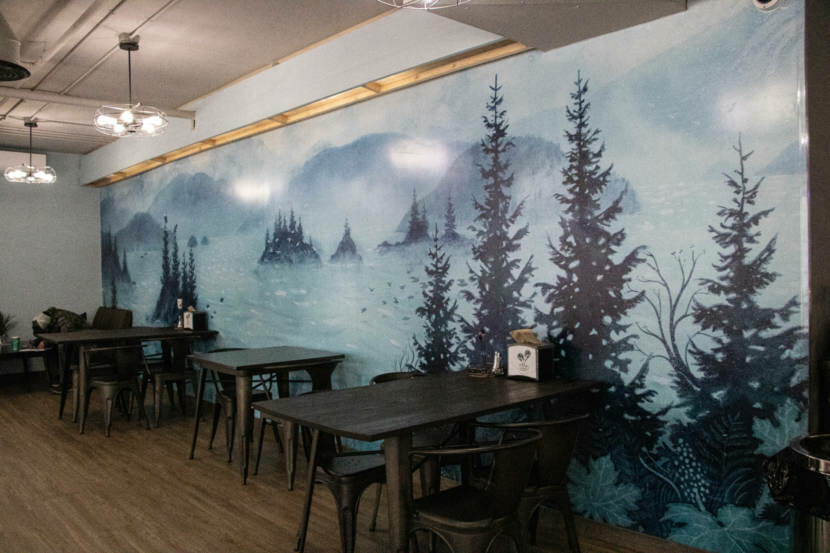
Goade thought a seascape would be a great way to do this.
She lives in Sitka now, so she did not paint the mural in-person. In fact, the actual mural is not a painting at all, but a giant sticker.
“For me, I have a hard time painting too large with watercolor. Just the nature of the paints — they dry quickly… And you have to kind of go faster, so it’s hard,” Goade said. “It can be trickier the bigger you scale up, and then I’m also limited by paper size.”
That is partly why it was created as a large vinyl sticker instead of painted in the shop. To make the mural, Goade painted a large watercolor painting. Then the painting was scanned at a very high resolution and touched up in Photoshop. After that, the image was blown up onto a large, wallpaper-like vinyl sticker and put on the wall.
Goade still has not seen her art yet in person, but Tlingit artist Robert Mills has. He was the other artist Sacred Grounds commissioned. He is Tsaagweidí and originally from Kake.
Mills was not sure which direction he wanted to go with his art, since the project was pretty open-ended. But when he saw the misty fog in Goade’s mural, it inspired him to depict the Tlingit story of Fog Woman.
In the story, Raven courts Fog Woman, who is a supernatural being. But he mistreats her.
Despite her situation, Fog Woman creates salmon. That process of creation during hardship really spoke to Mills.
“The norm, I think, is just to be like, ‘Well, this scenario sucks.’ Go on living a melancholy life because you don’t have X or Y. But she’s speaking this thing into existence,” Mills said. “And it just kind of blows me away because you know, she eventually manifests salmon, even despite her scenario in which she’s in where she’s being subpar.”
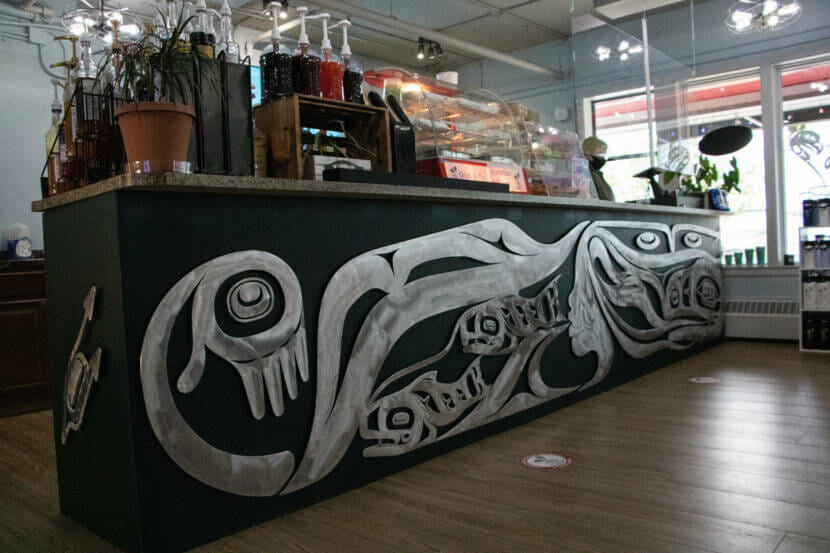
The entire aluminum carving reads from right to left, instead of left to right. On the far right is Raven. In the center of the sculpture is a human silhouette of Fog Woman. Her hair, which is fog, is coming out of Raven’s mouth because she is trying to escape from Raven. And salmon swim out of Fog Woman’s mouth — being spoken into existence, as Mills puts it. On the very left of the sculpture is a hand.
“And the hand is like, it’s there in a way to, say, pose the question, ‘Well, is that her hand or is that Raven’s hand — who’s trying to obviously still remedy that separation?’” Mills said.
Mills’ aluminum carving of this story is mounted right below the bar where you would order a drink.
The project was more complicated than Mills anticipated. The machine used to cut the metal, called a CNC machine, required a very large file — so large that the art had to be in vector format.
“So I’ve had to learn these different formats and vectorization skills to get the formline down and vector it and then convert it and then shoot it over to a machine,” he said.
But Mills was interested in learning more about what he could do with aluminum, so he stuck with the material. In this carving, he finished the aluminum in a way that makes it swirl and move like fog.
Along with learning new techniques to carve formline, Mills mixed realism and formline together in his carving — something he said is uncommon.

